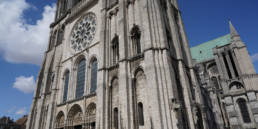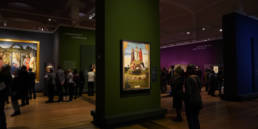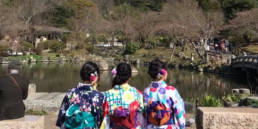Thanks to its crystal clear waters and world-renowned beaches, Greece is featured among the top summer destinations around the world. However, the country is not only about day-long sunbathing on the beach and eating too much. Greece offers heart and soul right through the year, from Easter in the islands to climbing the breathtaking cliff-top monasteries of Meteora. Indeed the capital, Athens, once simply a stopping point for travelers, is rapidly becoming a city-break favourite.

The Greek capital is a far cry from the version often presented by the media today. Protests are highly localized in Syntagma and visitors are free to explore the rest of the city easily. It might seem obvious, but the starting point of any visit to Athens must be at the Acropolis. As well as being a symbol of classical culture, architectural mastery and ages of debate and discourse, the Acropolis is a thing of beauty. Its magnificence is partly down to its carefully hand carved Caryatids of the Erechtheion and the Parthenon, temple of the maiden goddess Athena, which have survived for thousands of years and its importance in the history of our civilization, where mathematics and democracy were shaped and took their first steps.

Descending the Acropolis you’ll reach the pedestrian street of Apostolou Pavlou lined with cafes. This is the area of Thisseion where the Ancient Agora is located. The pulse of Classical Athens used to beat right here. Crowds flocked to the site of the Agora for trade, political, religious and artistic purposes. The Ancient Agora site features some perfectly maintained structures, such as the temple of the Greek God Hephaestus.

And now Plaka! This is the oldest neighbourhood in Athens, a chance to step back in time. Wandering around its cobbled streets you’ll see ancient ruins, neo-classical buildings as well as many orthodox churches. Go to Anafiotika, a scenic tiny neighborhood on top of Plaka resembling a Cycladic island. For the record, builders from the island of Anafi came to Athens in order to work in the refurbishment of King Otto’s Palace, establishing this place as their home.
Where time-travelling Plaka ends, the pedestrian street of Dionysiou Aeropagitou starts, an area in which history and modernity meet in the New Acropolis Museum on the left and the Odeon of Herodes Atticus on the right. The museum is a prime example of how good Greek museums can be. It’s a light, airy space filled with monuments from the historic hill. It’s worth visiting the website to find out what concerts, talks and activities are on during your visit. While you’re there, it’s a great lunch choice too, blending traditional Greek cookery with an edgy flair that is surprisingly good for a museum café. The stone theatre located further up on the southwest slope of the Acropolis is a 5000-person capacity open air amphitheater made of pentelic marble and has hosted the Bolshoi Ballet, Maria Callas and, the Miss Universe Pageant in the 70s. Don’t let that put you off though, it’s a well preserved venue that sums up the city’s art and cultural heritage.
Athens is a city that has art and history in its very foundations. Even if you are only passing through, you can’t help but be charmed by the easy-going locals, delicious food and incredible atmosphere. As an expert who lives in Athens, I hope my tips can help you plan an independent trip, though I also think it’s sometimes a good idea to book a guided tour of the city, because experienced guides can help you navigate the Greek alphabet and help you avoid the biggest tourist traps, two of the biggest difficulties that sometimes make it difficult to discover the authentic character of Athens.
Sign up to receive future blog posts by email
Zoe
Zoe Mouchritsa lives in Athens and specialises in finding the best and brightest things to do in this lively city and throughout Greece. After completing a BA in Applied Informatics and Multimedia in beautiful Crete, she jumped full time into blogging and is now editor for WhiteAndBlue.gr.
Related Posts
September 18, 2019
Re-Discovering Chartres: the Gothic Cathedral and Beyond
March 31, 2019
Mantegna and Bellini – Berlin exhibition review
May 1, 2018




